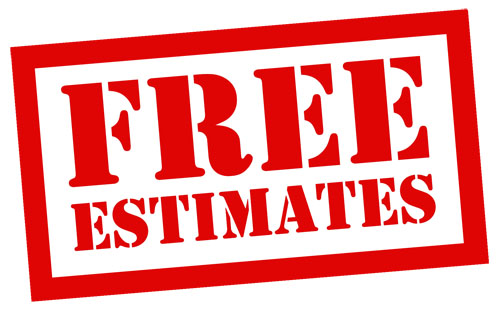What do my price estimates mean?
My current estimates
Users will find price estimates for practically every variety and condition when they search for certificates in the online database. The estimates they will find are presented as ranges. Those ranges express the normal variability I expect collectors will encounter when shopping among professional dealers. Overall, very few prices change between semi-monthly updates, although estimates for a few varieties will move up or down in response to sales from major auction houses. EBay prices can be "all over the board," so they factor into my estimates more slowly. In general, my estimates represent the selling prices I expect to see for:
- average-quality certificates...
- offered by top-tier professional dealers...
- in the United States.

I expressly warn collectors:
- to make price adjustments for their own buying habits and preferred sellers
- that my estimates do NOT represent expected selling prices in Europe;
- that my estimates do NOT represent expected selling prices on eBay.
Certificates sell in many different situations and therefore, display wildly different prices.
- Weather, time of year, news stories, and the state of the overall economy all affect prices, both positively and negatively.
- Certificates that sell in poorly attended or poorly promoted auctions usually sell for 10% to 40% below my estimates.
- Certificates that sell on eBay (US) generally sell for 40% to 80% of my estimates.
- Certificates that sell on eBay (UK) generally sell 25% to 40% of my estimates.
- Certificates that sell on eBay (DE) generally sell 40% to 60% of my estimates.
- Certificates that sell in live auctions in Europe commonly sell for 125% to 200% of my estimates.
- Dealer prices in the U.S. generally range within about 80% to 125% of my estimates.

Detective work
Much educated research, guessing, and speculation goes into estimating prices. Sadly, I cannot possibly interview every dealer for his or her view on pricing every variety. Auction result, however, speak volumes. I want readers to feel to disagree with my estimates. And I want them to let me know If they have significant evidence I missed. Remember, however, that I base my price estimations on a myriad of factors:
- When there is a price history, I base price estimates upon real prices paid by real collectors.
- I always include buyers' commissions and currency conversions in auction prices.
- I include Value Added Taxes (VAT) where applicable
- I exclude postage, local sales taxes, and state sales taxes.
- I always give greater weight to recent prices.
- Regardless of whether I agree with them or not, I do NOT base prices on what collectors or dealers believe certificates should be worth.
- Collectors frequently overpay in the heat of auction battles.
- Just because two people battled over a single certificate at auction does not necessarily reflect widespread demand.
- The goal of almost every collector is to pay the very least.
- Collectors want to acquire collectibles today. Although they want to pay the very least, collectors often end up paying too much because they usually don't have any idea how long they might need to wait to find another desirable item.
- Prices paid in the past suggest future prices. They do NOT guarantee future prices.
- Rarity of certificates affects desirability, but does not guarantee repetition of past prices.
- Long times between appearances often influence desirability, but do not guarantee high prices.
- Like prices in the stock market, record-high and record-low prices may never be equaled for many years
- The values of collections do not always rise.
- Remember that every time a collector wins an item at auction, all other bidders thought the price paid was too high.
- "Buyer's remorse" and "seller's remorse" are very real and to be expected.

The "Price Paradox"
I am sure that eBay-only buyers will perceive my price estimates as unrealistically high. I am reasonably certain that collectors who participate in European auctions will think my prices are absurdly low.
There is no possible chance I can estimate prices that all collectors will accept as realistic; there are simply too many different markets from which to buy. I explain more at Price paradox.
Sales results over time
The database automatically computes sales over four time ranges for every variety in the database:
- Sales during the past year
- Sales within the last three years
- Sales within the last ten years
- Sales within the last twenty years
This gives users the ability to view how prices have changed over time. Please understand that incomplete price records are the rule, not the exception. While there are thousands of certificates sold each year, Only the most common certificates sell constantly.
As of early 2024, I had no price history for 19% of the varieties and sub-varieties listed in the database. There are several reasons for those absences:
- items sent by contributors without price information (#1 reason)
- items described in auction lots, but never seen nor offered separately
- items described or contributed by correspondents, but never seen offered for sale
- items shown or described in references with no price reports
- items listed or discovered only in library or museum collections
The database shows price estimates for many of those "missing" certificates, usually because their descriptions or appearances seem acceptably close to other existing and priced varieties. It is probably safe to assume that the majority of those items are scarce to exceedingly rare, although that does not mean they will fetch high prices if and when they appear for sale. It is highly probable that some of those missing items are erroneous or incomplete reports of existing varieties.
Sales during the past year
I record all sales results I can find and have time to enter into the database. I round all sales results to the nearest dollar. Because of time constraints, I do not have time to record eBay sales below $19.50.
Approximately 29% (!) of all listed varieties, including those that have no price history at all, were offered for sale at least once during the last year. That rate of turnover is significantly higher than the last time I measured that statistic in 2017. I suspect this reflects the liquidation of several long established collections as well as ongoing liquidation of at least two long-time dealer inventories.
Be aware that large numbers of sales take place out of public scrutiny and those sales are unknowable because they take place:
- between collectors and dealers,
- at shows (bourses) in the U.S. and Europe,
- on auction sites I never see.
I beg both collectors and dealers to help the collecting community. If you have purchased or sold certificates currently listed as "No recorded sales", please send me scanned images along with prices. ("Prices" include commissions and VAT, but NOT postage, local taxes, or state sales taxes.
Price results from live auctions always include commissions. Commissions currently range from 15% to 25%. Prices from European sales are converted into dollars based on conversion rates that prevailed at sale time or at the close of currency trading on the next business day.
In the 1990s and before, many dealers issued fixed price catalogs and lists. Prices tended to fluctuate in efforts to "turn" inventory, Today, almost all old-time lists have been replaced by online inventories. One would think that dealers would reprice their online inventories frequently. I find the opposite to be true. I find some online prices have persisted entirely unchanged over the span of fifteen years or more. Since online inventories fairly static, the majority of 1-year prices are reflective of auction results more than online inventories.
Sales within the last 3 years
All my comments about one-year price records apply here. About 41% of all known varieties were offered for sale during the last three years. Many serious rarities sold during that period that had not been seen for several decades.
Sales within the last 10 years
In the 10-year period, we are pulling in offerings that took place during a deep recessionary period. Prices were not strong and therefore "trained" many buyers to expect lower prices to continue forever. During that time, 64% of all recorded varieties and sub-varieties were offered for sale, or reported for the first time.
Ten-year price averages are generally higher than 3- or 1-year averages indicating that prices are lower now than in the past.
Sales within the last 20 years
During the 20-year period, we pick up price records from about thirty R.M. Smythe auctions, when buyers' commissions were 15%. This period includes a few years before eBay auctions had become a great factor in downward price pressure. Also included are a number of price records from dealer price lists that essentially disappeared after eBay grew into a huge market force.
74% of all certificate varieties were offered for sale during the last twenty years. Back in 2017, that number was only 58%, so it is clear that recent exits (and deaths) of collectors and dealers from the hobby have freed up large numbers of very scarce and rare certificates. One must question how many of those certificates have entered long-term collections and will remain hidden for many more years.
Price updates and reviews

I review price estimates every time I record a new price. That does not mean I adjust prices with every new sale, but I "touch" them. My price estimates are naturally less reliable if I have not encountered a particular variety for several years.
It is tempting to assume that prices should be higher now than they were in the past. Unfortunately, that assumption is wrong. In actual fact, certificate prices have been dropping since 2003. Please see Railroad Certificate Price Index for a graphic view of the price decline.
Contrary to most participant's expectations, prices have dropped 35% from 2003 to present. Some common items are at 20-year lows. All price categories have been hit hard, but common items more than scarcer items.
The decline has been very real. To what can we attribute the decline? Anyone's guess is as good as mine, but commonly-accused culprits include:
- The stunning growth of eBay. Dealers and observers of the collectible stock and bond hobby agree that eBay is a "buyer's market." eBay prices are among the lowest possible. Buyers determine what sells. Sellers can control sales prices only by their minimum bids and by their refusal to offer scarce certificates. I contend that eBay and other online auction sales have hurt price at live auctions because eBay has trained bidders to expect crazy low prices.
- The loss of the R.M. Smythe's annual stock and bond show at Strasburg, Pennsylvania. That show has been supplanted by the Bob Schell Stock Certificate & Bond Show in Herndon, Virginia (suburban Washington D.C.) Bob's show has been successful and is easier to access (close to Dulles Airport). Still, a single show a year seems a poor showing for a country the size of the United States, especially when measured against multiple European shows each year.
- The loss of the R.M. Smythe company. Smythe was merged into the venerable British company Spink in 2008, but the promises of continuing stock and bond sales have largely disappointed collectors. Spink now tends to offer North American certificates in multi-item lots, which decreases per-item costs often by 50% and more. I cannot possibly use prices of multi-item lots as indicative of anything except wholesale pricing. Don't get me wrong, that is great for dealers seeking inventory. For collectors who want to sell? Not so much.
- The disappearance of physical stocks and bonds from worldwide exchanges. With the move to near-total electronic trading, there is almost no opportunity for average investors to encounter physical certificates. The lack of having physical certificates to hold has certainly not helped the hobby convert investors into collectors.
- The jittery world economy has often been blamed for declines in almost every collectible hobby except fine art. Some have argued that average collectors are hard-pressed and may not have the money to spend on collectibles. While compelling at first glance, the argument ignores the obvious fact that the vastly more expensive coin hobby has been doing much better than scripophily.
- The lack of price guides and the lack of good methods of protecting collections. Obviously, I saw the need for a price guide in the railroad specialty in the early 1990s. Sadly, there is still a large and glaring need for price guides in other specialties. However, to blame current low prices on the lack of guides ignores the fact that prices were more robust in the past when there were even fewer guides .
- The lack of hobby publications. It would be nice for collectors to have more than one triannual publication (Scripophily, the publication of the International Bond and Share Society) through which to communicate. But, as with other narrow hobbies, there is an inescapable reality that publications cannot survive without an adequate number of subscribers. It is clear that the numbers of serious collectors is small and therefore limits the number of issues a magazine can economically publish. Fewer collectors means decreased possibility of sustaining multiple publications.
- The liquidations of several collections, some caused by death and some by capitulation before prices drop further.